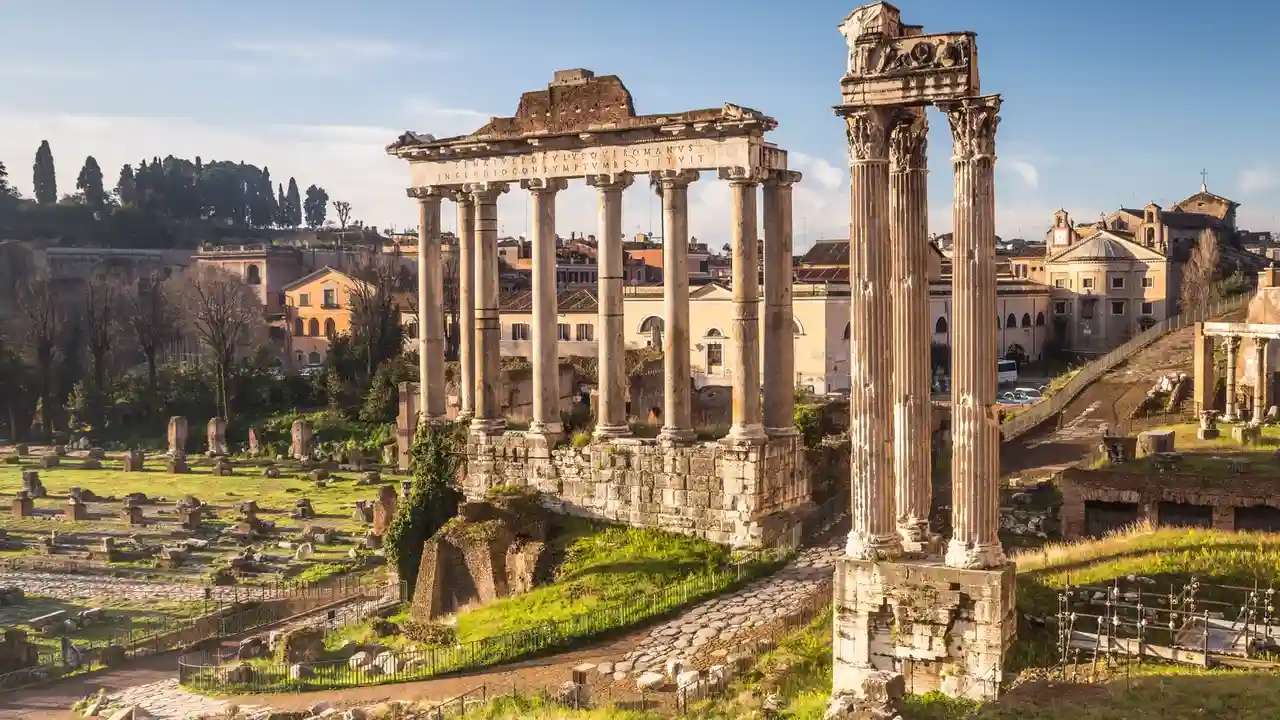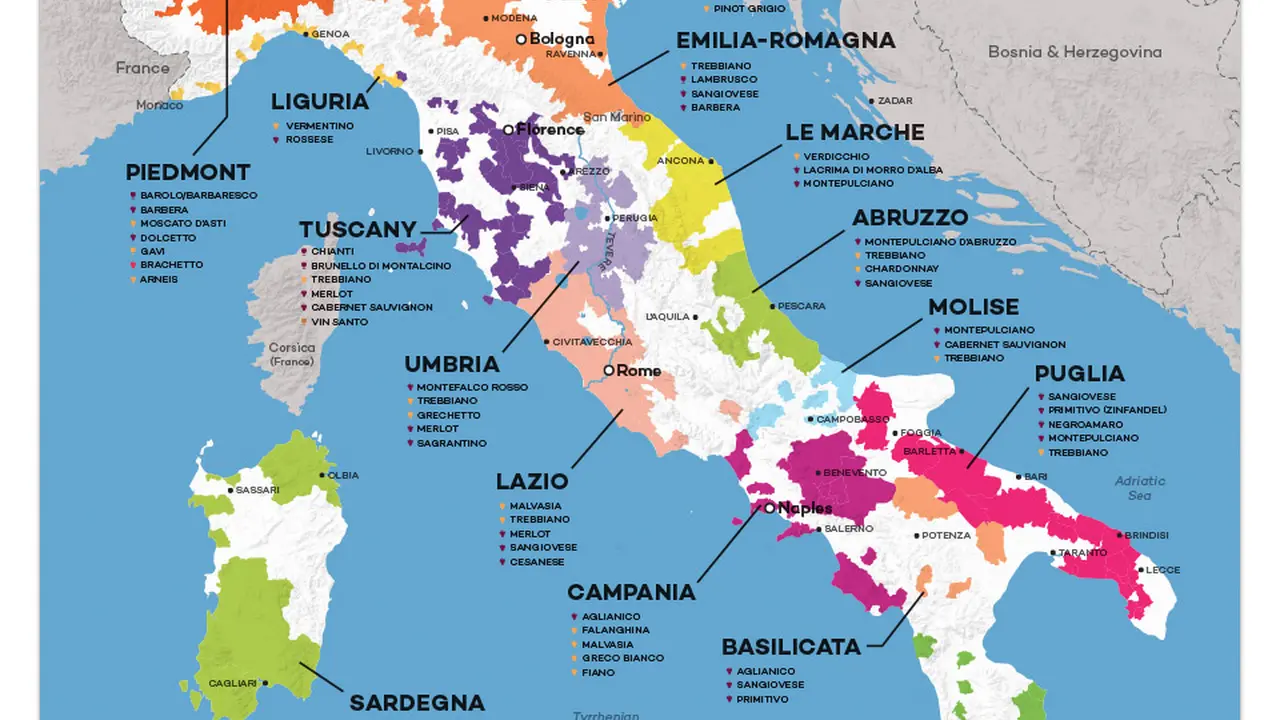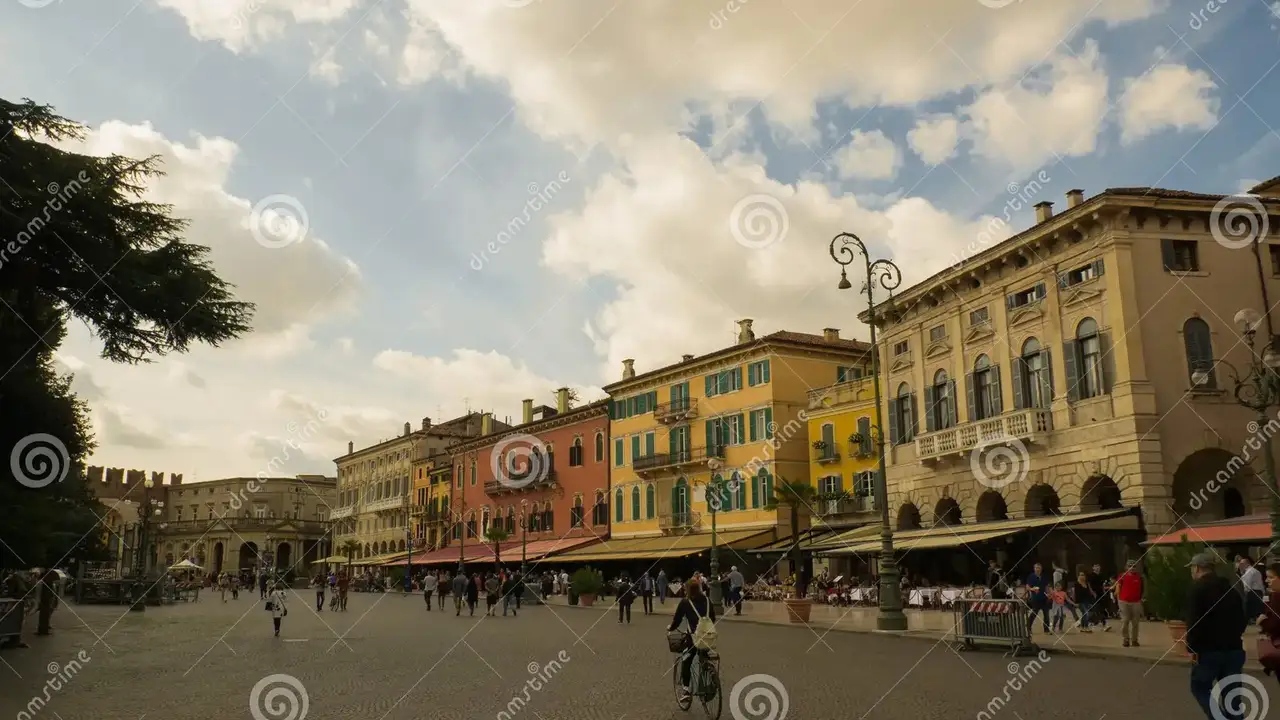Italian Architecture: A Journey Through Time

Explore the history of Italian architecture Learn about different styles building techniques and iconic landmarks Discover the architectural wonders of Italy
A Glimpse into Italian Architectural History and Styles
Italian architecture is a captivating journey through time, reflecting the country's rich history, diverse cultures, and innovative spirit. From the grandeur of ancient Roman structures to the elegance of Renaissance palaces and the boldness of modern designs, Italy offers a stunning array of architectural styles. Let's delve into some key periods and their defining characteristics.
Ancient Roman Architecture The Foundation of Italian Design
The Romans were master builders, and their influence on Italian architecture is undeniable. Their structures were characterized by practicality, durability, and a sense of grandeur. Key features of Roman architecture include:
- Arches and Vaults: The Romans perfected the use of arches and vaults, allowing them to create large, open spaces and support heavy structures.
- Concrete: The invention of Roman concrete revolutionized construction, enabling the creation of complex and durable structures.
- Columns: Roman columns, often based on Greek orders (Doric, Ionic, Corinthian), were used for both structural support and decorative purposes.
- Examples: The Colosseum, the Roman Forum, the Pantheon, and numerous aqueducts and roads throughout Italy.
Early Christian and Byzantine Architecture Religious Influences
With the rise of Christianity, architecture in Italy shifted towards religious structures. Early Christian and Byzantine styles emphasized simplicity, functionality, and the creation of sacred spaces. Key features include:
- Basilica Plan: Churches were often built on a basilica plan, featuring a long nave, side aisles, and an apse.
- Mosaics: Byzantine architecture is renowned for its intricate mosaics, which adorned the interiors of churches and depicted religious scenes.
- Domes: Domes became a prominent feature, symbolizing the heavens and creating a sense of awe.
- Examples: Basilica di San Vitale in Ravenna (a prime example of Byzantine architecture), early Christian basilicas in Rome.
Romanesque Architecture Strength and Simplicity
Romanesque architecture, prevalent from the 10th to the 12th centuries, emphasized solidity, strength, and a return to simpler forms. Key features include:
- Rounded Arches: Romanesque architecture retained the use of rounded arches, creating a sense of stability and balance.
- Thick Walls: Buildings were constructed with thick walls and small windows for structural support.
- Massive Proportions: Romanesque structures often had a heavy, imposing appearance.
- Examples: Pisa Cathedral, Basilica di Sant'Ambrogio in Milan.
Gothic Architecture Light and Verticality
Gothic architecture, which emerged in the 12th century, represented a significant departure from Romanesque styles. It emphasized light, verticality, and a sense of soaring space. Key features include:
- Pointed Arches: Pointed arches allowed for taller and more slender structures.
- Ribbed Vaults: Ribbed vaults distributed weight more efficiently, enabling the construction of larger and more complex spaces.
- Flying Buttresses: Flying buttresses provided external support for the walls, allowing for larger windows.
- Stained Glass: Stained glass windows filled the interiors with colorful light and depicted religious stories.
- Examples: Milan Cathedral (a late Gothic masterpiece), Siena Cathedral.
Renaissance Architecture A Revival of Classical Ideals
The Renaissance, beginning in the 14th century, marked a revival of classical Greek and Roman ideals in art and architecture. Key features include:
- Symmetry and Proportion: Renaissance architecture emphasized balance, harmony, and mathematical proportions.
- Classical Orders: The classical orders of columns (Doric, Ionic, Corinthian) were revived and used extensively.
- Domes: Domes, inspired by the Pantheon, became a prominent feature of Renaissance churches and palaces.
- Humanism: Renaissance architecture reflected a focus on humanism, celebrating human achievement and beauty.
- Examples: St. Peter's Basilica in Vatican City, Florence Cathedral (Brunelleschi's Dome), Palazzo Pitti in Florence.
Baroque Architecture Drama and Ornamentation
Baroque architecture, which emerged in the 17th century, was characterized by drama, ornamentation, and a sense of grandeur. Key features include:
- Elaborate Decoration: Baroque buildings were adorned with intricate sculptures, carvings, and paintings.
- Curved Lines: Curved lines and flowing forms created a sense of movement and dynamism.
- Illusionism: Baroque architects used techniques of illusionism to create the impression of greater space and depth.
- Theatrical Effects: Baroque architecture aimed to create a theatrical and awe-inspiring experience for the viewer.
- Examples: Trevi Fountain in Rome, St. Peter's Square in Vatican City.
Neoclassical Architecture A Return to Simplicity
Neoclassical architecture, popular in the late 18th and early 19th centuries, represented a reaction against the excesses of the Baroque. It emphasized simplicity, order, and a return to classical forms. Key features include:
- Symmetry and Proportion: Neoclassical buildings were characterized by symmetrical layouts and balanced proportions.
- Classical Elements: Classical columns, pediments, and friezes were used extensively.
- Restrained Ornamentation: Ornamentation was kept to a minimum, emphasizing the clean lines and geometric forms of the building.
- Examples: Teatro San Carlo in Naples, Galleria Vittorio Emanuele II in Milan (though it also has elements of other styles).
Modern and Contemporary Architecture Innovation and Functionality
Modern and contemporary architecture in Italy embraces innovation, functionality, and a wide range of styles. Key features include:
- Use of New Materials: Modern architects experiment with new materials such as steel, glass, and concrete.
- Emphasis on Functionality: Buildings are designed to be functional and efficient.
- Minimalism: Some modern buildings embrace minimalism, with clean lines and simple forms.
- Sustainability: Increasingly, modern architecture incorporates sustainable design principles.
- Examples: MAXXI National Museum of 21st Century Arts in Rome (designed by Zaha Hadid), Bosco Verticale in Milan.
Iconic Italian Landmarks A Detailed Exploration
Italy is home to some of the world's most iconic architectural landmarks. Let's take a closer look at a few of these masterpieces:
The Colosseum Rome's Ancient Amphitheater
The Colosseum, also known as the Flavian Amphitheater, is a symbol of ancient Rome. Built in the 1st century AD, it was used for gladiatorial contests and public spectacles. Its massive size and intricate design are a testament to Roman engineering prowess. The Colosseum's elliptical shape, arched entrances, and complex network of underground passages are truly remarkable. Today, visitors can explore the Colosseum's ruins and imagine the spectacles that once took place within its walls.
The Pantheon Rome's Temple to All Gods
The Pantheon is one of the best-preserved ancient Roman buildings. Originally built as a temple to all the gods, it was later converted into a church. Its most striking feature is its massive dome, which is the largest unreinforced concrete dome in the world. The oculus at the top of the dome allows natural light to flood the interior, creating a sense of awe and wonder. The Pantheon's classical proportions and harmonious design have inspired architects for centuries.
St Peters Basilica Vatican City's Grandest Church
St. Peter's Basilica is the largest church in the world and a masterpiece of Renaissance and Baroque architecture. Located in Vatican City, it is a major pilgrimage site for Catholics. The basilica's dome, designed by Michelangelo, is an iconic symbol of the Vatican. The interior is adorned with stunning works of art, including Michelangelo's Pietà and Bernini's Baldachin. Visitors can climb to the top of the dome for panoramic views of Rome.
Florence Cathedral Brunelleschi's Engineering Marvel
Florence Cathedral, also known as the Duomo, is a symbol of Florence. Its most remarkable feature is its massive dome, designed by Filippo Brunelleschi. Brunelleschi's dome was a groundbreaking engineering achievement, as it was built without the use of scaffolding. The cathedral's facade is adorned with colorful marble and intricate sculptures. Visitors can climb to the top of the dome for breathtaking views of Florence.
Leaning Tower of Pisa Pisa's Unique Bell Tower
The Leaning Tower of Pisa is one of the most recognizable landmarks in the world. Construction began in the 12th century, and the tower began to lean shortly after. The lean is due to unstable soil. Despite the lean, the tower has remained standing for centuries. Visitors can climb to the top of the tower for unique views of Pisa. The tower is a popular spot for tourists to take photos, pretending to hold it up.
Architectural Products and Their Uses in Italy
Italy's architectural landscape isn't just about grand monuments; it's also about the materials and products that shape everyday buildings. Here are a few examples of commonly used architectural products and their applications:
Terracotta Tiles Classic Roofing and Flooring
Terracotta tiles are a staple in Italian architecture, particularly in Tuscany and other rural areas. These clay tiles are known for their warm, earthy tones and durability. They are commonly used for roofing and flooring. Terracotta roofs provide excellent insulation and a traditional aesthetic. Terracotta floors are durable and easy to maintain. You can find them in various sizes and shapes, from simple squares to more intricate patterns. Prices vary depending on the quality and size, but expect to pay around $5-$15 per square foot.
Carrara Marble Luxury and Elegance
Carrara marble, quarried in the Apuan Alps of Tuscany, is prized for its white color and subtle veining. It has been used in sculpture and architecture since ancient Roman times. Carrara marble is commonly used for countertops, flooring, and wall cladding in luxury homes and commercial buildings. It adds a touch of elegance and sophistication. Expect to pay a premium for Carrara marble, ranging from $40-$100+ per square foot, depending on the grade and thickness.
Venetian Plaster Decorative Wall Finish
Venetian plaster is a decorative wall finish made from lime putty, marble dust, and pigments. It creates a smooth, polished surface with a subtle sheen. Venetian plaster is often used in high-end interiors to create a luxurious and sophisticated look. It can be applied in various textures and colors to achieve different effects. Application requires skilled artisans, and the cost can range from $10-$30+ per square foot, depending on the complexity and the artisan's expertise.
Steel and Glass Modern Construction Materials
Steel and glass are increasingly used in modern Italian architecture. Steel provides structural support for large buildings and allows for open floor plans. Glass allows for natural light and creates a sense of transparency. These materials are often used in commercial buildings, museums, and residential developments. The cost varies widely depending on the specific type of steel and glass used, as well as the complexity of the design.
Comparing Architectural Product Brands in Italy
When it comes to architectural products, several Italian brands stand out for their quality, innovation, and design. Here's a brief comparison of a few:
- Marazzi: A leading manufacturer of ceramic and porcelain tiles. Marazzi offers a wide range of styles and designs for both residential and commercial applications. Known for durability and stylish designs. Prices vary based on collection and size.
- Bisazza: A renowned brand specializing in glass mosaics. Bisazza mosaics are used to create stunning decorative surfaces in bathrooms, kitchens, and swimming pools. Premium brand, expect higher prices.
- Italgraniti: Specializes in porcelain stoneware, known for its technical performance and aesthetic appeal. Offers solutions for various architectural needs. Mid-range price point with good value.
Navigating Italian Building Techniques and Regulations
Understanding Italian building techniques and regulations is crucial for anyone planning a construction project in Italy. Here are some key considerations:
Regional Variations in Building Styles
Italian architecture varies significantly from region to region, reflecting local traditions, materials, and climates. In Tuscany, you'll find terracotta roofs and stone farmhouses. In Venice, you'll see colorful buildings along the canals. In the Alps, you'll find wooden chalets. It's important to be aware of these regional variations when planning a project.
Importance of Permits and Local Regulations
Obtaining the necessary permits and complying with local building regulations is essential for any construction project in Italy. Building regulations vary from region to region and even from municipality to municipality. It's advisable to consult with a local architect or engineer to navigate the permit process. Failing to obtain proper permits can result in fines or even demolition of the building.
Working with Local Artisans and Craftspeople
Italy has a rich tradition of craftsmanship, and working with local artisans and craftspeople can add a unique touch to your project. Italian artisans are skilled in techniques such as stone carving, plastering, and woodworking. They can create custom features that will enhance the beauty and value of your building. Building a good relationship and respecting their expertise is key to a successful collaboration.
:max_bytes(150000):strip_icc()/277019-baked-pork-chops-with-cream-of-mushroom-soup-DDMFS-beauty-4x3-BG-7505-5762b731cf30447d9cbbbbbf387beafa.jpg)






